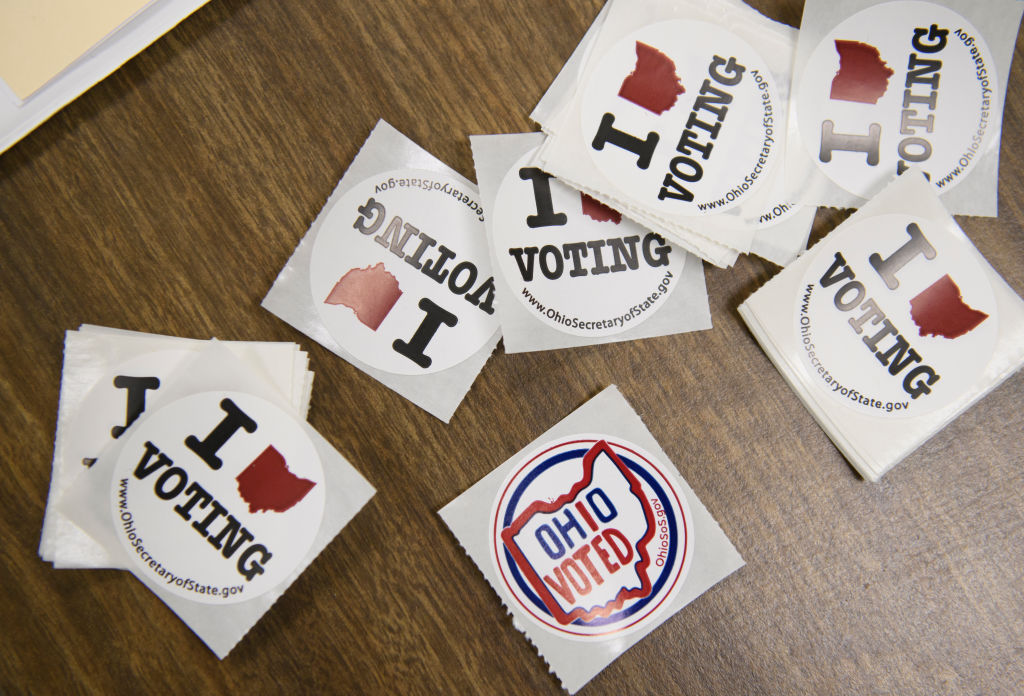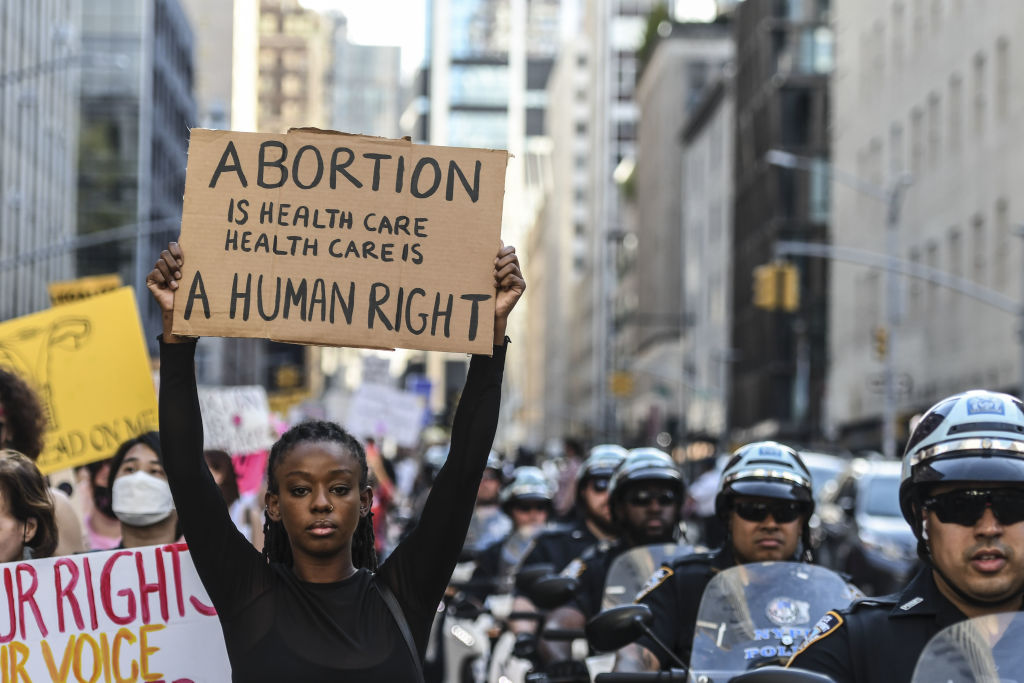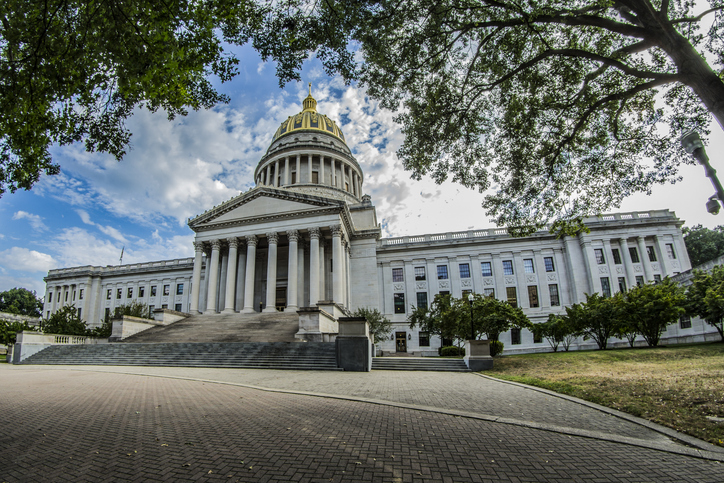Grassroots Organizers Are Changing The Political Destiny Of Ohio
Op-ed: Changing The Political Destiny Of Ohio

Source: Jeff Swensen / Getty
Most national pundits and commentators have bemoaned my state of Ohio for recently turning into solid Republican ground. But the reality is: Ohio candidates have not prioritized reaching out to the people in my community — the Black Ohioans whose voices have been perpetually left out of the political conversation.
According to Dr. Ibram X. Kendi, the real swing voters are those who are deciding whether to vote or not at all. And for too long now, Black, brown, and young Ohioans haven’t been invited to the table of political power in Ohio. Our votes have been diluted, our voices have been silenced, and our communities have been undermined. So it’s no surprise that many of the people in my community don’t vote.
For our democracy to work in America, it must represent and include all of us.
Every day Ohioans like me – young, Black, and working-class – are fed up with the rigged political and financial systems that have long dominated our state and country.
As co-executive director of the Ohio Organizing Collaborative, I am a steward of Ohio’s biggest power-building organization. Every day, our grassroots leaders are weaving together a multi-racial, multi-faith, and multi-issue coalition in a traditionally purple state that is now trending red and increasingly considered a lost cause by the national Democratic apparatus.
Grassroots political power is crucial to protecting democracy
Guided by the leadership of our members on the ground, I help register voters, run campaigns, and empower hundreds of Ohioans to become powerful leaders rooted in their self-interest and adept at moving the pieces of the political chessboard at the Ohio Statehouse.
I wasn’t always like this.
Growing up, I never thought much about politics. I just wanted to work hard and keep my head down. After college, I actually wanted to pursue a career in filmmaking. But it was the trajectory of my own experience as a young, low-income Ohioan of color – and my family’s close brush with the social safety net – that pushed me to get involved and fight back.
I grew up in the post-industrial city of Dayton, the son of two Black business owners. My folks instilled in me an entrepreneurial work ethic and a sense of upward mobility that, in their minds, could only be gained through hard work. It wasn’t until I went to college that I realized my mom was actually struggling to keep our house from being foreclosed during the 2008 financial crisis. And that my grandmother ultimately had to put my two cousins into foster care because she could not afford to raise them by herself.
I thought something was deeply wrong with my family. I thought we were personally responsible for invoking these terrible circumstances upon ourselves. Until one day, an Ohio Organizing Collaborative organizer approached me and asked me if I wanted to change the very same conditions that had brought my family to my knees.
I said yes nearly a decade ago, and I’ve been saying yes ever since.
Through my involvement as a young Black leader at the Ohio Organizing Collaborative, I began to grasp the interconnected nature of our racial and economic struggles here in Ohio. I learned the power map of who was calling the shots in our cities and in our state. Over time, I understood that our suffering was caused by bad policies in Columbus and D.C. – and that they were hurting all of us in our communities, no matter our income or skin color.
Organizing provides pathways for change
Organizing made me feel like I could change things. It made me feel powerful. And it made me feel like I could win back our state with the help of other Ohioans like me.
In 2014, we began organizing around issues of police accountability in the midst of what later became the Black Lives Matter movement. Three days before the shocking, flashpoint murder of Mike Brown in Ferguson, MO, a white police officer shot and killed a young Black man named John Crawford II at a Walmart in Beavercreek, Ohio. I myself lived two miles away from that Walmart and was planning to go to that store the same day.
Something shifted in me about the urgency of what was possible. My comrades and I decided to occupy the Beavercreek Police Department and sleep there overnight until the police conceded to our demands. That was a transformative moment for so many of us, particularly for Black leaders like me who had felt unprotected by the system yet still chose to occupy that terrifying space with our bodies. It made us realize that regular people, no matter our race or income, could wield enough collective power to change the system.
The campaign we ran around John Crawford’s death in 2014 failed. But seven years later, with the leadership of Cleveland mothers directly impacted by police violence, we won Issue 24, the most powerful police accountability measure to be ever implemented in the city where Tamir Rice was infamously murdered. This charter amendment will give Clevelanders a new civilian oversight board with the final say on police discipline and the wide-sweeping powers to implement it.
Having the right resources and campaign infrastructure helped us win Issue 24. But it was the sheer power of Black voters in Cleveland that ultimately turned our victory into a landslide. Official data reporting in 2021 showed an overwhelming number of voters in east Cleveland – a largely Black and low-income area of the city – voted for Issue 24. In the end, nearly 60% of all Clevelanders voted for real police accountability and justice – thanks to the important work of our leaders getting out the vote on the ground.
Ohio Organizing Collaborative is building power beyond winning campaigns
Organizing is not just about winning campaigns. It’s also about the 365-day process of building power with regular people – through voter registration, relationship-building, one-on-one conversations, and the strategic lifting of the veil for others so they can realize their own agency and power to make change. The act of building an intentional community around shared interests is really powerful, and that’s something I’m proud to have been transformed by in myself as well as helped spark in other people.
My organization, the Ohio Organizing Collaborative, has seen its fair share of ups and downs through the years. We have shared many transformative wins with our fellow Ohioans and equally devastating losses. But through it all, we have always believed in the power of everyday Ohioans.
These days, I’m excited about the power that formerly incarcerated Ohioans, and their loved ones will soon wield in my state. Hundreds of grassroots leaders with Building Freedom Ohio have been registering to vote, meeting with elected officials, and learning how to exercise their political power every day. More than 1 million Ohioans have a felony record, and if we can empower and develop even just a fraction of those people into leaders, we will change the political destiny of Ohio.
Every community has a story. What we’re trying to center at the Ohio Organizing Collaborative are the stories of people often forgotten and discarded across our state and country – young people, returning citizens, low-wage workers, and faith leaders. For the first time, Ohioans are joining together in our communities to take action and participate in our democracy. We are the stories whom we want to lift up and tell. We are the ones who will save ourselves and, by extension, our state.
Prentiss Haney is the co-executive director of the Ohio Organizing Collaborative, Ohio’s largest community organizing organization. He was born and raised in Dayton. Follow the Ohio Organizing Collaborative on Facebook, IG, and Twitter.
SEE ALSO:
Black Voters Are Concerned About Crime But Need Candidates Willing To ‘Make Bold Decisions’
‘Quality Of Life’ Issues Dominate Concerns For Black Voters, New Data Suggests
















